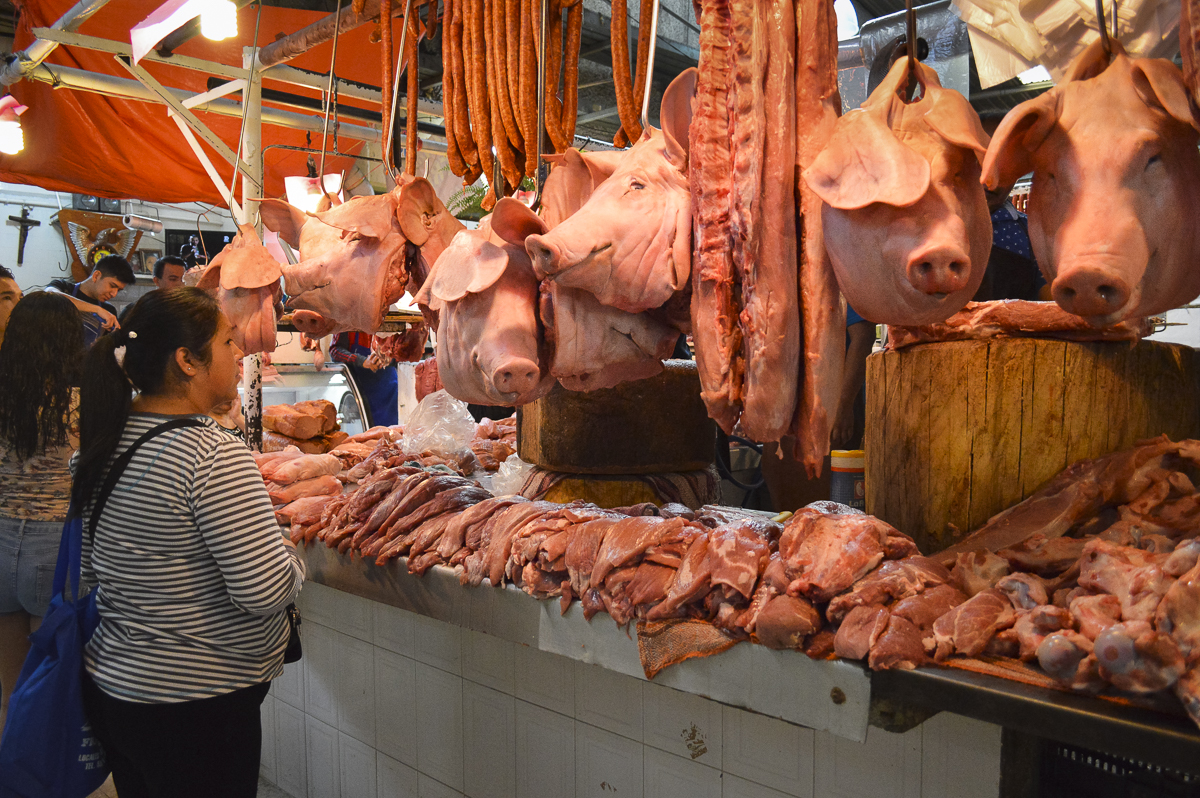Discover the Local Flavor at Bagley Farms Meat Market Edwardsville IL: Fresh and Delicious
Discover the Local Flavor at Bagley Farms Meat Market Edwardsville IL: Fresh and Delicious
Blog Article
Uncover the Art of the Butcher's Cut in a Modern Meat Market
In the ever-evolving landscape of modern-day meat markets, the butcher's cut has transcended its traditional origins, combining old-time workmanship with modern techniques. Today's butchers are not merely cpus of meat; they are well-informed artisans that highlight sustainability and moral sourcing. Their expertise in selecting and preparing cuts customized to certain culinary needs supplies an exceptional dining experience. What really sets the contemporary butcher apart is their capability to forge a much deeper link in between customers and the origins of their meat. Exactly how do these masters equilibrium tradition with advancement, and what implications does this have for the future of meat consumption?
Development of Butchery Methods
The evolution of butchery methods mirrors an abundant tapestry of advancement and adjustment driven by developments in modern technology, changes in consumer need, and a deeper understanding of meat science. Historically, butchery was a craft passed down with generations, with approaches sharpened over centuries to make the most of yield and taste. Nevertheless, the commercial change ushered in automation, transforming standard methods and enabling massive processing.
The mid-20th century saw butchery methods additionally refined by scientific insights into muscular tissue biology and meat aging, boosting both inflammation and preference. Developments like vacuum packaging and refrigeration expanded item shelf-life, permitting butchers to expand offerings and boost quality assurance. This period likewise marked the surge of customized tools, such as band saws and meat slicers, which enhanced accuracy and effectiveness in meat processing.

The 21st century has actually introduced electronic technology right into the butchery world. Electronic systems now aid in tracking pet provenance and enhancing cuts to satisfy specific consumer choices. Furthermore, a resurgence in artisanal butchery has actually emerged, blending conventional skills with modern-day knowledge to deal with customers looking for ethical and sustainable meat options. This evolution highlights a dynamic interaction in between practice and development, meeting modern demands while protecting the craft's heritage.
Comprehending Meat Cuts
Understanding the ins and outs of meat cuts is essential for both butchers and customers seeking quality and worth. For butchers, precise cuts show ability and regard for the craft, ensuring very little waste and optimal yield.

Recognizing muscular tissue structure is essential; muscles utilized a lot more frequently by the pet have a tendency to be harder and are best suited for slow food preparation techniques, while less-used muscle mass, like those located in the loin, are extra tender and suitable for barbecuing or roasting. Experience with these differences empowers customers to make enlightened options, enhancing their cooking undertakings.
Choosing Top Quality Meat
Choosing the best meat involves even more than simply choosing a visually enticing item from the display. The art of selecting top quality meat requires a critical eye and expertise of details attributes that symbolize freshness and excellence.
Second of all, consider the marbling, which refers to the white streaks of fat within the muscle mass. Appropriate marbling is an essential sign of inflammation and taste, as it thaws during food preparation, boosting the meat's juiciness. Keep in mind, greater marbling typically associates with exceptional top quality cuts, such as USDA Prime.
Appearance is an additional important element; meat must really feel solid to the touch, not slimy or excessively soft. In addition, be conscious of the scent. Fresh meat ought to have a clean, neutral odor, devoid of any sour or repulsive smells.
Combining Cuts With Cooking Methods

Conversely, tougher cuts like brisket and chuck roast are rich in collagen, which damages down right into jelly when cooked gradually. These cuts are excellent for braising or sluggish roasting, enabling the meat to tenderize gradually and create deep, complicated tastes. Cuts such as brief ribs and pork shoulder get on well with slow-cooking techniques, where extended cooking times transform their robust appearances into succulent meals.
Lamb shanks and oxtail, which need long term food preparation to tenderize, are excellent prospects for cooking or slow-moving simmering. These approaches coax out rich, passionate tastes while keeping moisture. By understanding the special qualities of each cut, cooks and home visit site chefs alike can boost their culinary developments, making certain each meal is both satisfying and memorable.
The Butcher's Duty Today
Browsing the advancing landscape of the contemporary meat market, the butcher's function today extends beyond mere prep work of cuts. Contemporary butchers are cooking artisans, educators, and advocates for lasting methods.
Along with crafting accurate cuts, butchers now involve straight with customers, using cooking advice and customizing options to fit specific demands and preferences. Their know-how in meat aging, marbling, and flavor accounts equips customers to make educated choices, improving their culinary experiences. This personalized solution exhibits the butcher's advancing duty as a trusted advisor in the kitchen area.
In addition, butchers are critical in minimizing waste, making use of whole animals to develop diverse products such as sausages and supplies. This comprehensive approach not just appreciates the animal however likewise aligns with modern sustainability goals. By doing this, the modern-day butcher symbolizes both tradition and innovation, adapting to an ever-changing market while preserving the creativity and stability of their craft.
Conclusion
Mastery in understanding varied meat cuts and high quality signs empowers butchers to supply informed recommendations, straightening specific cuts with optimal food preparation techniques. By recognizing historical methods while investigate this site welcoming modern needs, the butcher's function remains important in today's innovative meat market.
Report this page